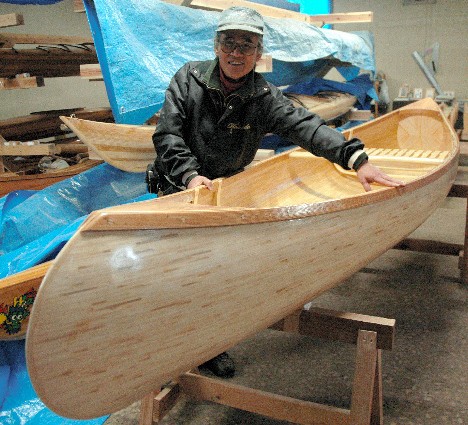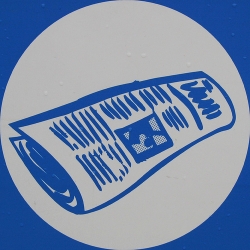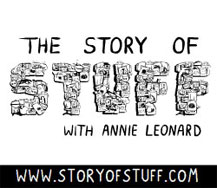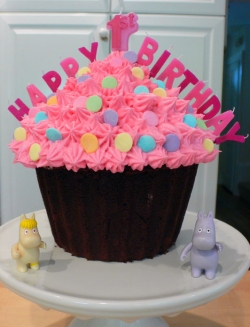Living in the Western world, we Americans aren’t quite attuned to the disposal of used chopsticks. It simply isn’t that big of a problem, as we hurl food into our gaping maws with spiky metal shovels. Generally speaking, the only time we chop down forests in order to feed ourselves is when McDonald’s expands its beef production into the Amazon. The Chinese, our brothers and sisters across the great blue expanse, have an additional problem: chopsticks. They produce approximately 45 billion pairs a year, most of which being as disposable as a Uwe Boll movie. That amounts to about 25 million trees a year.
China’s insatiable hunger for the utensil world’s learning curve has become so voracious that special taxes have been passed in order to save their forests from the dinner plate. Without greater efforts to stem the clickity-clack of a chopstick doomsday we may soon find gangs of pandas rampaging through Chinese villages looking to devour their eating utensils.
How can you do your part to help save panda bears from a life of crime? Well, perhaps we ought to take a few tips from a former lowly civil servant, Shuhei Ogawara. He’s taken 7,382 chopsticks and constructed them into a potentially sea-worthy canoe! Collecting them from the Koriyama City Hall cafeteria every day for two years he’s mixed chopsticks, resin, and a little genius and come up with yet another west-shaming brilliant invention!
There’s plenty of room aboard this love boat
Wonderfully-fantabulous, isn’t it? Though, I do know what you’re thinking: “But Angelo, we are but fork-eaters and do not chop with sticks!”. Tsk tsk! It’s time you took a gander at the seven billion Chinese food restaurants jammed into every strip mall in the U.S.A. I advise you to eat as much Chinese food as possible; not just because it’s my favorite food, mind you. I really don’t need competition at the buffet line; it’s hard enough to get to the fresh pot stickers first. I am, however, willing to sacrifice some yummies for the sake of the forests of the world.

Those of you cheap-skates and poor-skates can, of course, dumpster dive in order to score the necessary chops. I would suggest asking politely, actually, I am sure they won’t mind having someone dispose of their waste materials for free. I know many of you live for adventure, but I don’t want to have caused a movement that will seriously irritate the makers of my favorite dishes.
Should any of you try out this idea I’d like to see some pictures, years from now, of chopstick canoes, boats, pontoons, yachts, maybe even a couple ocean liners and submarines. I’d wait a little bit before I accept any offers to take a ride, though. Perhaps I’ll ride a pontoon without much testing, those things are easy to escape from.
Photos from pinktentacle.com and criticalmiami.com











Hey Angelo!
I found this cool chopstick purse & chopstick wrapper wallet on Etsy ! http://www.etsy.com/view_listing.php?listing_id=5153260
Looks so super cute and easy to make. Maybe not as impressive as a boat, but every little idea counts!
Hey Angelo!
I found this cool chopstick purse & chopstick wrapper wallet on Etsy ! http://www.etsy.com/view_listing.php?listing_id=5153260
Looks so super cute and easy to make. Maybe not as impressive as a boat, but every little idea counts!
Hey Angelo!
I found this cool chopstick purse & chopstick wrapper wallet on Etsy ! http://www.etsy.com/view_listing.php?listing_id=5153260
Looks so super cute and easy to make. Maybe not as impressive as a boat, but every little idea counts!
Don’t we just need culture change, ie wash them, and use again (for eating)? and again and again….or if not there’s always mulching/composting for those made of bamboo…while reusing for craft is a great idea and I’m sure will produce some fantastic results, when the scale of use/disposal is this huge I think we need some large scale solutions too..
Don’t we just need culture change, ie wash them, and use again (for eating)? and again and again….or if not there’s always mulching/composting for those made of bamboo…while reusing for craft is a great idea and I’m sure will produce some fantastic results, when the scale of use/disposal is this huge I think we need some large scale solutions too..
Don’t we just need culture change, ie wash them, and use again (for eating)? and again and again….or if not there’s always mulching/composting for those made of bamboo…while reusing for craft is a great idea and I’m sure will produce some fantastic results, when the scale of use/disposal is this huge I think we need some large scale solutions too..
I am speaking as a chinese point of view, using chopsticks is an unique culture and good to maintain it. However, it is time to think it seriously on disposal chopsticks’s impact onto environment. Increasing prices for chopsticks do not bring much influence unless peoples are realized why we can’t use disposal chopsticks. Education and government roles are mostly important to alert public on this issue.
I am speaking as a chinese point of view, using chopsticks is an unique culture and good to maintain it. However, it is time to think it seriously on disposal chopsticks’s impact onto environment. Increasing prices for chopsticks do not bring much influence unless peoples are realized why we can’t use disposal chopsticks. Education and government roles are mostly important to alert public on this issue.
I am speaking as a chinese point of view, using chopsticks is an unique culture and good to maintain it. However, it is time to think it seriously on disposal chopsticks’s impact onto environment. Increasing prices for chopsticks do not bring much influence unless peoples are realized why we can’t use disposal chopsticks. Education and government roles are mostly important to alert public on this issue.
Bamboo chopsticks can be reused at home, but health codes prevent them from being reused in restaurants. They sometimes use plastic ones which can be put through the dishwasher, but bamboo is still the choice for takeout.
My MIL brought a bunch of metal travel chopsticks back from China and distributed them to us. Some of them are collapsable (like a radio antenna) and fit in a little case that can be used as a key chain. Others have two longer pieces that are screwed together and fit in a little case about the size of reading glasses. So, the solution is out there.
I still end up with the bamboo ones from time to time and save them compulsively. Sometimes I use them for small plant stakes because I don’t have enough for a boat. Danny Seo made a little easel with them to hold a postcard in Country Home March 2007.
But why stop here? Disposable cutlery is a problem in the US too, and it’s not as biodegradable (You may be able to recycle it in some areas.) I’ve seen chandeliers and the like made from plastic spoons, but they’re generally made from newly purchased boxes. I’d like to see someone make something out of the ones that actually get used (ie. don’t match). Then again, maybe it’s better we just cut down using those.
Bamboo chopsticks can be reused at home, but health codes prevent them from being reused in restaurants. They sometimes use plastic ones which can be put through the dishwasher, but bamboo is still the choice for takeout.
My MIL brought a bunch of metal travel chopsticks back from China and distributed them to us. Some of them are collapsable (like a radio antenna) and fit in a little case that can be used as a key chain. Others have two longer pieces that are screwed together and fit in a little case about the size of reading glasses. So, the solution is out there.
I still end up with the bamboo ones from time to time and save them compulsively. Sometimes I use them for small plant stakes because I don’t have enough for a boat. Danny Seo made a little easel with them to hold a postcard in Country Home March 2007.
But why stop here? Disposable cutlery is a problem in the US too, and it’s not as biodegradable (You may be able to recycle it in some areas.) I’ve seen chandeliers and the like made from plastic spoons, but they’re generally made from newly purchased boxes. I’d like to see someone make something out of the ones that actually get used (ie. don’t match). Then again, maybe it’s better we just cut down using those.
Bamboo chopsticks can be reused at home, but health codes prevent them from being reused in restaurants. They sometimes use plastic ones which can be put through the dishwasher, but bamboo is still the choice for takeout.
My MIL brought a bunch of metal travel chopsticks back from China and distributed them to us. Some of them are collapsable (like a radio antenna) and fit in a little case that can be used as a key chain. Others have two longer pieces that are screwed together and fit in a little case about the size of reading glasses. So, the solution is out there.
I still end up with the bamboo ones from time to time and save them compulsively. Sometimes I use them for small plant stakes because I don’t have enough for a boat. Danny Seo made a little easel with them to hold a postcard in Country Home March 2007.
But why stop here? Disposable cutlery is a problem in the US too, and it’s not as biodegradable (You may be able to recycle it in some areas.) I’ve seen chandeliers and the like made from plastic spoons, but they’re generally made from newly purchased boxes. I’d like to see someone make something out of the ones that actually get used (ie. don’t match). Then again, maybe it’s better we just cut down using those.